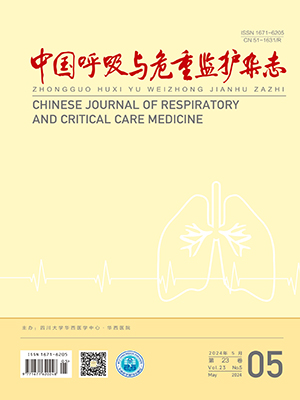Objective To investigate the clinical characteristics and risk factors associated with death in critically ill patients with severe community-acquired pneumonia( CAP) .
Methods A retrospective analysis was carried out in 125 hospitalized patients with severe CAP admitted from July 2008 to February 2012. Earlier clinical features were compared between 109 survival patients and 16 dead patients, and logistic regression analysis was conducted.
Results The death group had more underlying diseases than the survival group( P lt;0. 05) . The heart rate at admission in the death group was significantly higher than that in the survival group( P lt;0.05) . The ratio and number of complication, the highest temperature before admission, the platelet count, the arterial blood pH, PaO2 and PaO2 /FiO2 in the death group were significantly lower than those in the survival group( P lt; 0. 05) . Logistic regression analysis showed that the number of underlying diseases, heart rate and PaO2 were predictors of death in the patients with severe pneumonia.
Conclusion The number of underlying diseases, heart rate and PaO2 has highly predictive value of death for severe CAP.
Citation: LI Fei,LI Hui.. The Earlier Clinical Features of Severe Community-Acquired Pneumonia and Predictive Factors of Death by Logistic Regression Analysis. Chinese Journal of Respiratory and Critical Care Medicine, 2013, 12(3): 249-252. doi: 10 . 7507 /1671 -6205 . 20130060 Copy




